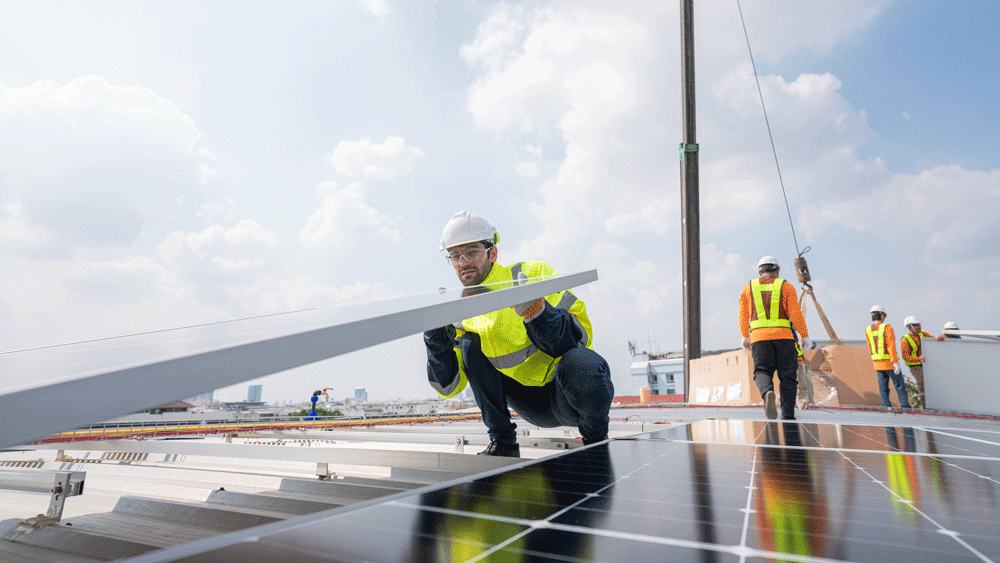We explore how improving energy efficiency can positively affect hospital operations, including cost savings, improved patient comfort, and reduced environmental impact.
Every sector has had to consider measures to maximise energy efficiency, and healthcare is certainly no exception.
Healthcare buildings contribute 15 per cent of the total NHS carbon footprint, according to NHS England.
As well as this, electricity already accounts for over 50 per cent of a hospital’s energy costs.
However, the NHS was the first health service in the world to imbed net zero into legislation with a goal of reaching net zero for emissions it directly controls.
At the end of last year, the NHS announced the rollout of a new centralised approach to buying energy which was estimated to slash its energy bill nationally by up to £100 million a year.
NHS Trusts across the country are also developing decarbonisation strategies with a keen focus on energy efficiency.
The Public Sector Decarbonisation Scheme has played a big part in this mission, which has implemented a range of different initiatives.
We have detailed a few ways that healthcare buildings across the NHS are hoping to increase their energy efficiency while improving patient comfort and reducing their environmental impact.
Solar energy
One way to reduce energy consumption in hospitals is to use more sustainable generation methods.
Solar panels, for example, capture the sun’s energy and convert it into electricity.
The cells don’t need direct sunlight to work and can even work on cloudy days but the stronger the sunshine, the more electricity generated.
The average hospital electric bill in 2021 came to £279,895, according to Light Up Energy. That of course equates to a lot of energy, but solar panels are proven to be able to generate enough to at least power part of a hospital building.
Hull University Teaching Hospitals, for example, installed solar panels in 2022 to generate enough electricity to meet the hospital’s entire daytime running needs during the summer months, supporting the wider NHS’s plan to become carbon net zero.
The 11,000-panel solar farm – funded through a grant of £4.2 million – means that during the summer, the organisation saves about £250,000 a month in energy bills.
At Southmead Hospital in Bristol, they have been able to install solar panels that will produce 255,000kWh of electricity each year, which will reduce their carbon emissions by 54 tonnes of CO2 and save £80,000 per year.
Matt Gitsham, carbon and energy manager of North Bristol NHS Trust, said in 2023 when the panels were installed: “This is another great step in helping reach our net-zero goal, and we are hoping to install a further 450 panels across the Southmead site in a few months.”
He added: “Together with help from staff in reducing their energy consumption, we can create a healthier, cleanlier, and brighter future for everyone.”
Lighting
Hospitals are more reliant on lighting than a lot of public sector buildings as it is essential for surgeries and other procedures.
However, there are ways to reduce energy consumption from lights.
LED lighting in hospitals is not only proven to reduce stress for patients, but it also reduces lighting energy usage.
At East Surrey Hospital operated by the NHS Surrey and Sussex Healthcare Trust, 720 LED fittings replaced old fluorescent tubes with LED light bulbs which are longer lasting.
Out of over 170 bids, the Trust was one of the 48 successful applicants to secure this transformative NHS grant of £100,000.
The Trust said that the LED lights will create savings of nearly £35,000 a year, alongside a remarkable reduction of 41 tonnes of carbon dioxide emissions – the equivalent of just over 70 passengers’ roundtrip flights to Munich.
As well as saving energy, LED lights can create a relaxing and welcoming environment in reception, consultation and patient rooms.
LED lights are also often preferred in hospitals because they have very little UV radiation compared to other bulbs.
Energy monitoring systems
Being aware of a hospital’s energy consumption is one of the first steps to reducing its carbon footprint.
That’s where energy monitoring systems come in. They provide users with data about the building’s consumption patterns so they can make informed energy management decisions.
Using smart technology, the systems can even look at individual rooms to determine how much energy it is using.
While being aware of inefficient energy use is only part of the solution, it is a great way to see where changes can be made within the hospital.
There are many other methods to reduce energy usage in healthcare buildings, and you can find out more via the Greener NHS page below.





